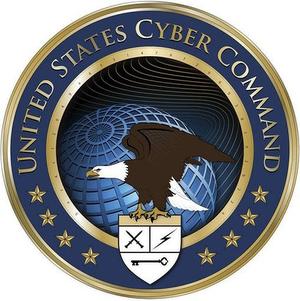CybersecurityU.S. Cyber Command will not go operational today as planned
The U.S. Cyber Command was to become operational today — but difficulties in recruiting qualified uniformed staff and lack of clarity about the Command’s mission have led the Command leaders to say that rather than fully operational, the Command, for the time being, will remain only at “initial operational capability”

Seal of the U.S. Cyber Command // Source: smh.com.au
The U.S. Cyber Command will not become operational today as had been planned, according to Pentagon spokesmen. Issues responsible for the delay include difficulties finding suitably qualified staff, and also the fact that it is not entirely clear what “operational” means for a cyber force, the Stars & Stripes reports .
“I don’t know that the 1 October deadline is holding strong and fast,” military spokeswoman Lieutenant Colonel Rene White told the military paper in response to the question whether the Cyber Command would indeed be operational as U.S. defense secretary Robert Gates had specified it should be. Asked what “fully operational” would actually mean for the cyber command, the colonel replied: “That’s a good question.”
Lewis Page writes that Cyber Command, which is directed by the head of America’s feared National Security Agency (NSA) and has its headquarters at the same complex (Fort Meade in Maryland), was created to bring the nascent cyberwar forces of the separate American armed services together. These include the U.S. 24th Air Force, Fleet Cyber Command, Army Forces Cyber Command, and Marine Forces Cyber Command.
The U.S. Air Force alone nowadays considers that it has 30,000 personnel assigned to “cyber” duties, though most of these are simply previously existing communications and electronics troops whose jobs are now deemed to be cyber ones. Only a few thousand are in the specialist 24th Air Force cyber formations.
Cyber Command HQ itself at Fort Meade is expected to have around 1,000 staff eventually, mostly uniformed service people as distinct from the largely civilian-staffed NSA (though the NSA is formally regarded as a “combat support agency of the Department of Defense”).
Pages notes that finding suitable military people to man up the Cyber Command is apparently a serious issue. Briefing politicians last week, NSA/Cyber Command chief General Keith Alexander said: “If you were to ask me, what is the biggest challenge that we currently face? It’s generating the people that we need to do this mission.”
Some U.S. officers considering this problem have said that military culture does not value technical skills, and its many other requirements — that personnel should be physically fit, able to shoot straight, will be expected to command others if they are to have decent status and pay, and more — mean that Cyber Command may never be properly manned from the existing services. Two cyber colonels recently argued for the creation of a fifth* service, the Cyber service, which would be deliberately set up to appeal more to tech geeks, though in fact this might already be said to exist in the form of the NSA.
Another factor in the Cyber Command delays is the issue of what its job is. General Alexander’s confirmation as boss was held up for some time by puzzled politicians trying to get more detail on this, and indeed judging by Colonel White’s comments even the Pentagon remains unsure. The command has a formal mission statement — inscribed on its crest in the form of an MD5 hash, though one needs to leave out a crucial hyphen to get the right value — but this does not seem to have resolved the matter.
Page writes that much debate has revolved around the issue of whether the Command will mount network attacks in other countries, and if so what the legal mechanisms for ordering it to do so might be. There is little doubt that it will be capable of making such attacks, however: the 24th AF alone contains an entire unit, the 67th Network Warfare Wing, dedicated to nothing else. Moreover, DARPA is known to be working on a digital “cyber range” in which to test the fearful network artillery and code missiles of tomorrow.
